Post by Aaron Eisen, PSU Neuroscience Club (and Bill Griesar)
How does our brain communicate with the 650+ muscles in our body, and allow us to move? What drives our ability to walk around, grasp items and direct our physical, muscular engagement with our environment? By understanding and harnessing these forces, could you make another person’s muscles move by using your own brain?
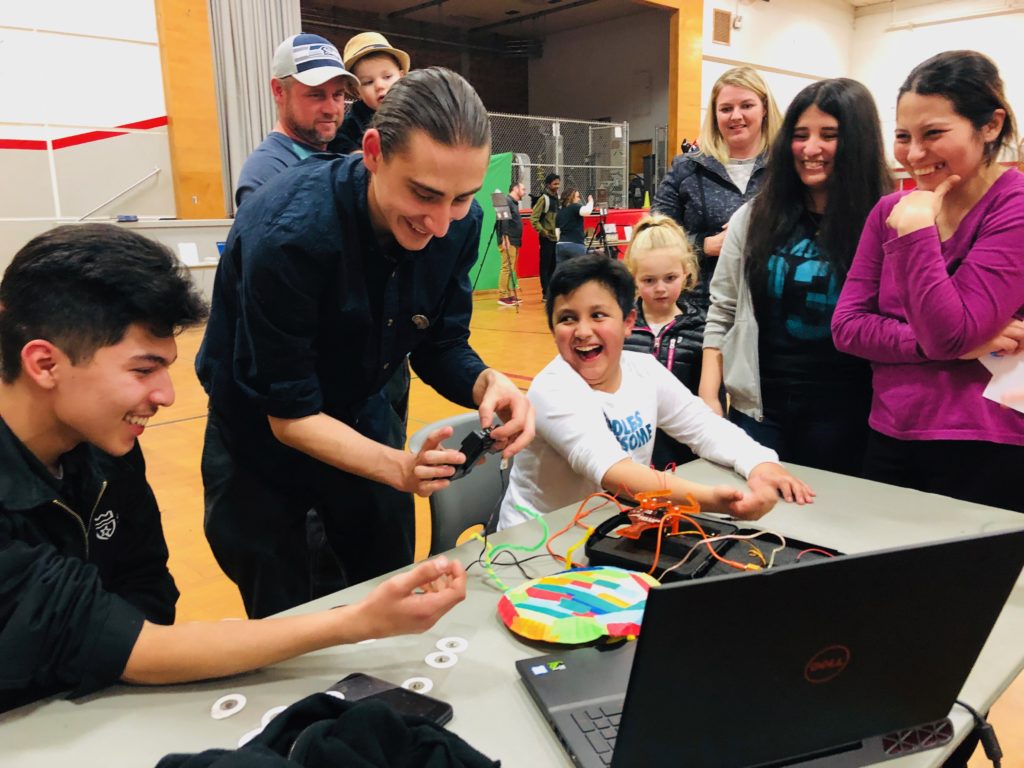
NW Noggin @ The Mac (McLoughlin Middle School)
LEARN MORE: The World Inside Their Heads
Welcome to electrophysiology!
Electrophysiology is a big word that can be broken down into two main parts. “Electro” refers to electricity and “physiology” refers to biological cells and tissues. Therefore electrophysiology is the study of electricity produced by cells in the human body…
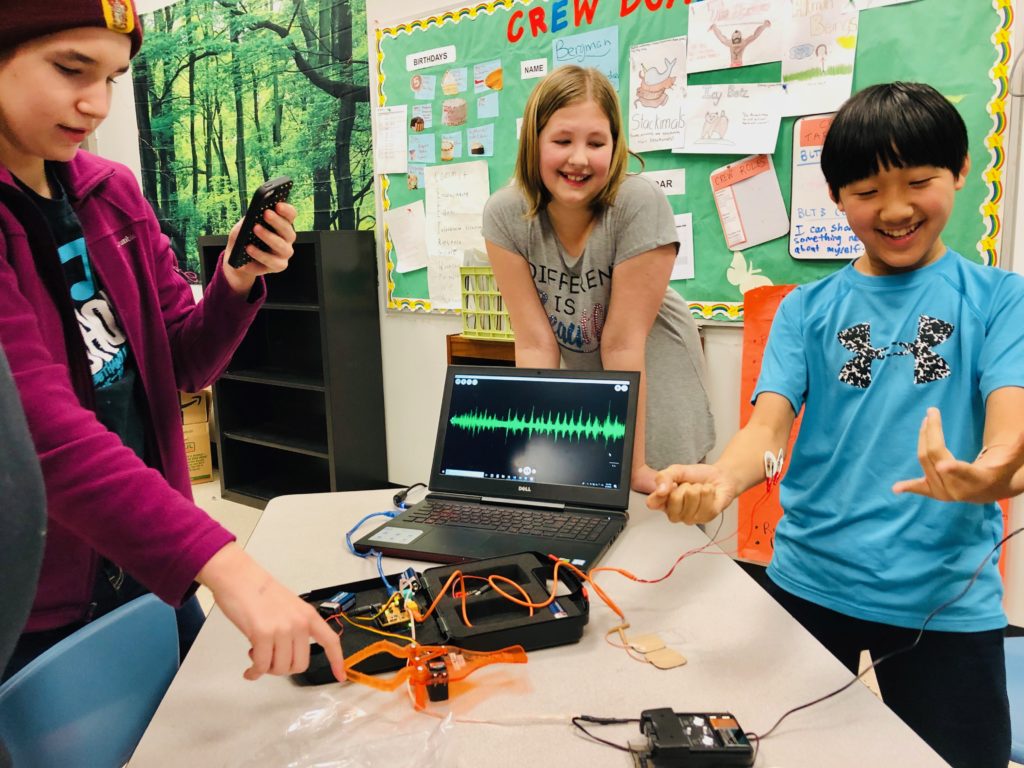
NW Noggin at Beaverton Public Schools
LEARN MORE: Putting brains back in biology @ HS2
We have many different cells in our body that specialize in various tasks. Our nervous system is made up of cells known as neurons and glia. Neurons (and some glia) have special properties that allow to them to generate and transmit electricity…
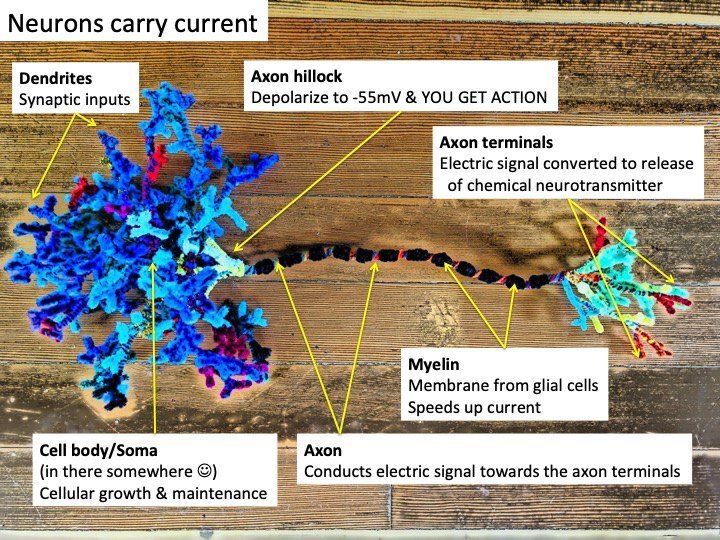
And a model for spring…🌱
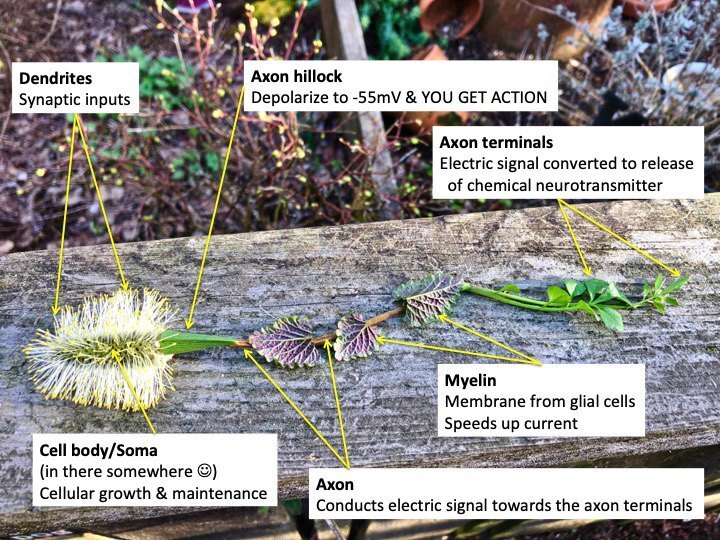
LEARN MORE: How do neurons send electrical messages?
When you decide to move your arm, brain cells in your frontal lobe known as upper motor neurons receive lots of excitatory inputs at their dendrites, which depolarizes their axon hillocks, and sends waves of electric current down their wiry axons into your spinal cord…

The axon terminals of these upper motor neurons will synapse with lower motor neurons in the spinal cord, whose own axons then exit the central nervous system (CNS) and run in cables known as nerves to synapse with muscle cells in your arm…

The release of a neurotransmitter called acetylcholine by the lower motor neurons on to muscle (at the neuromuscular junction) depolarizes these cells and causes your arm muscle to contract!
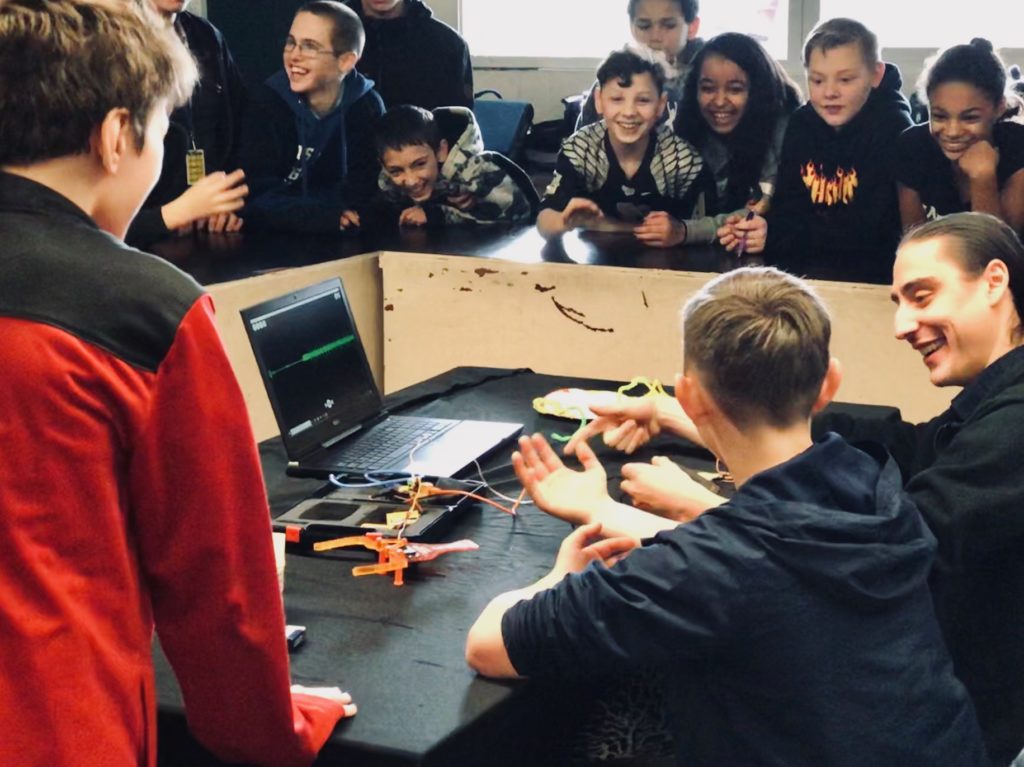
NW Noggin at North Middle School, Grants Pass
LEARN MORE: Gray Matter in Grants Pass!
The Human to Human Interface from the inspiring educators at Backyard Brains offers an extraordinarily compelling and popular approach to visualizing and exploring the electrical nature of information flow in both neurons and muscle…

NW Noggin at p:ear
LEARN MORE: Synaptic Shocks @ P:ear!
The device consists of an Arduino micro-controller circuit board which receives electrical input from electrodes placed over the muscles on a person’s arm…
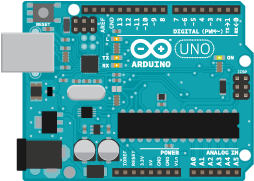
LEARN MORE: What is Arduino?
When that individual moves their hand, the electrical activity of their skeletal arm muscle (the electromyographic signal, or EMG) can be displayed on a computer screen…
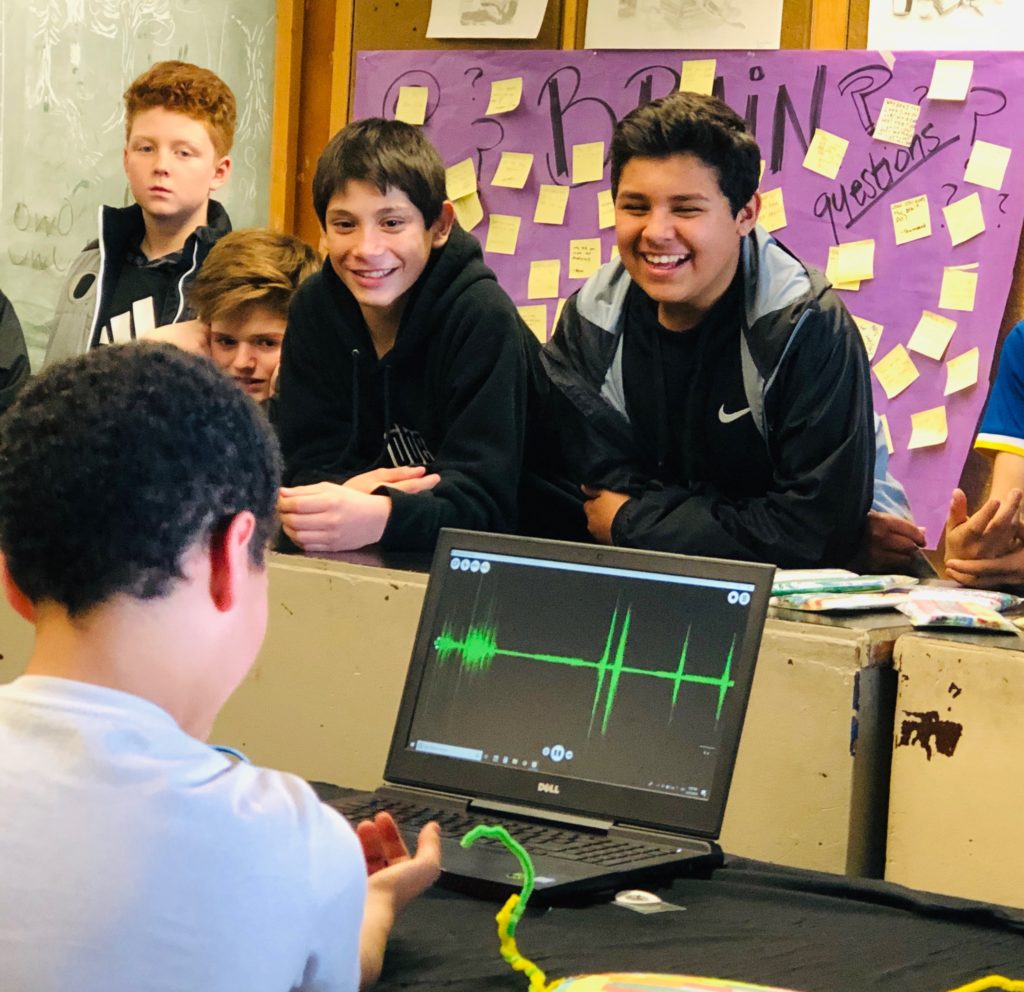
NW Noggin in Grants Pass, Oregon
LEARN MORE: Synaptic Community Connections
The message from the EMG can also be transferred via the Arduino board to a small servo motor which allows the participant to control a robot claw…
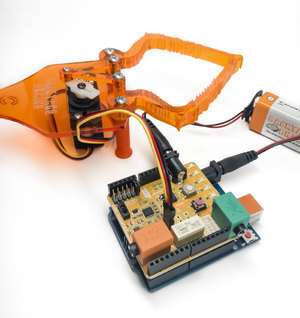
LEARN MORE: Backyard Brains – Controlling the Claw
A modified version of this technology has been used to create prosthetic limbs, including a myoelectric hand, by a company known as bebionic.
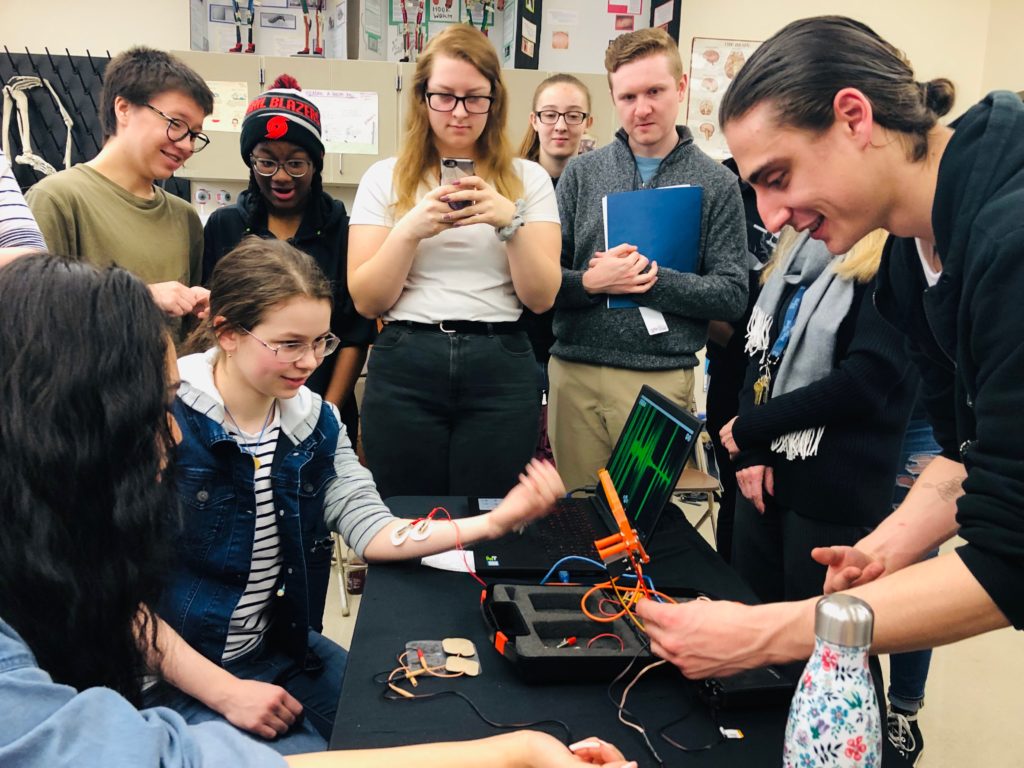
The EMG signal from your moving arm can also activate a Transcutaneous Electric Nerve Stimulation (or TENS) unit – basically a fancy way to say it can deliver an electric shock from a 9 volt battery that stimulates the muscles in a second person’s arm..!
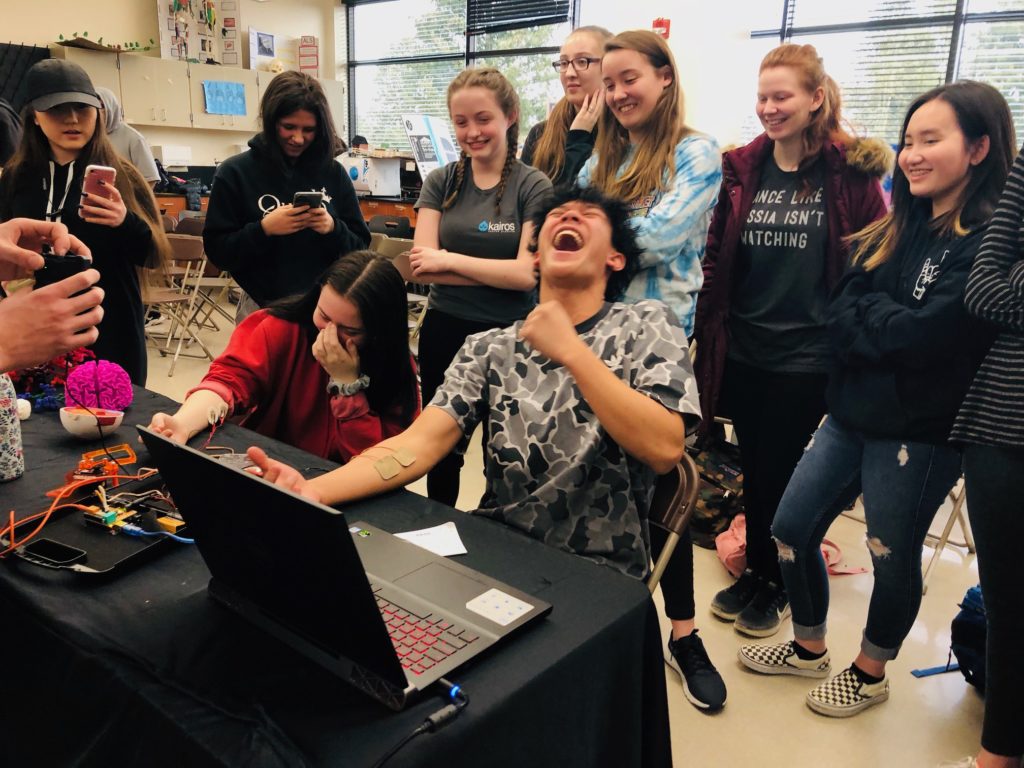
NW Noggin at HeLa High School, Evergreen Public Schools
LEARN MORE: Transcutaneous Electrical Nerve Stimulation: Mechanisms, Clinical Application and Evidence
LEARN MORE: Using TENS for pain control: the state of the evidence
The TENS unit delivers this shock through electrodes placed over the ulnar nerve of a second subject’s arm, so when the first subject clenches their fist, the second subject’s pinkie and ring finger move suddenly in response, as well!
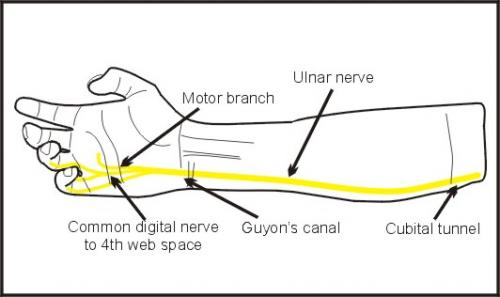
LEARN MORE: Ulnar nerve anatomy
Being controlled has been described as feeling as though “your arm fell asleep with a pins and needles sensation,” and some participants have reported to rather enjoy the feeling..!
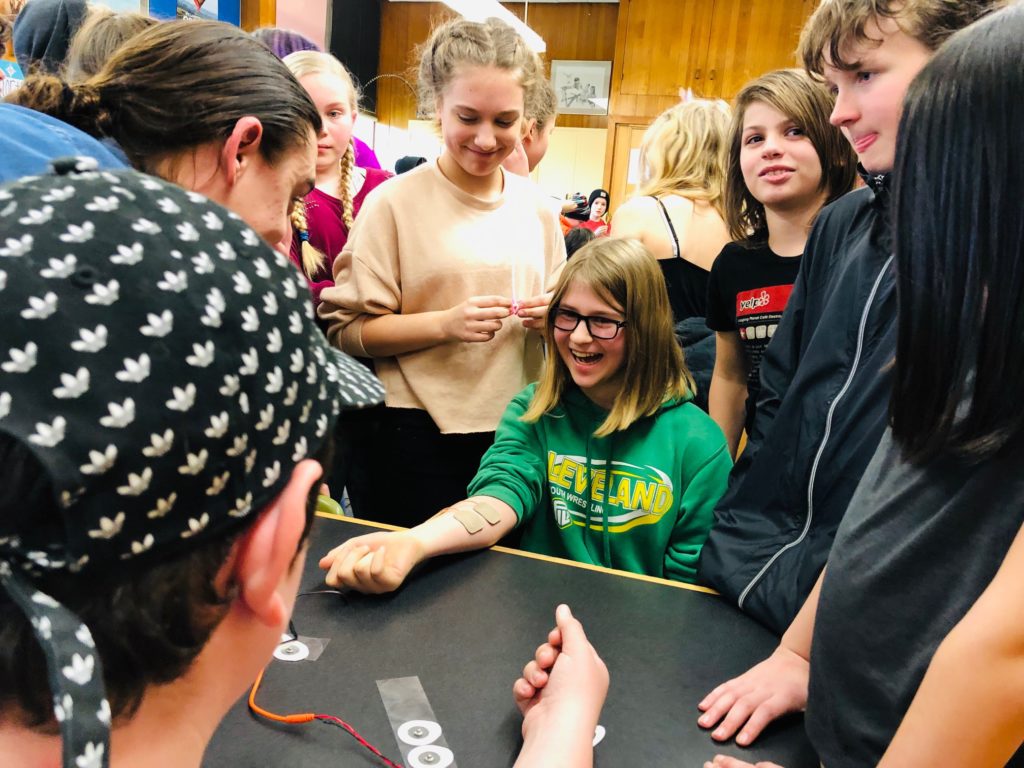
NW Noggin at Hosford Middle School, Portland Public Schools
LEARN MORE: Honest selves @ Hosford
We have found that is possible to run all the experiments together simultaneously (this is known as the “control freak package”). A single participant is thus able see their muscle activity, control a robot claw, and move a friend’s arm all at the same time!

The Human to Human interface has been an amazing addition to the array of activities provided by NW Noggin during public outreach. As of March 1st, 2019, we have demonstrated the device and discussed resting and action potentials with over 3000 children in Washington, Oregon, California, and Hawaii at 14 different events including the MacLaren Youth Correctional Facility in Woodburn, Oregon…
LEARN MORE: All is in motion, is growing, is you
The impact is astounding. Kids who are not normally engaged in classrooms are captivated by abilities of this device.
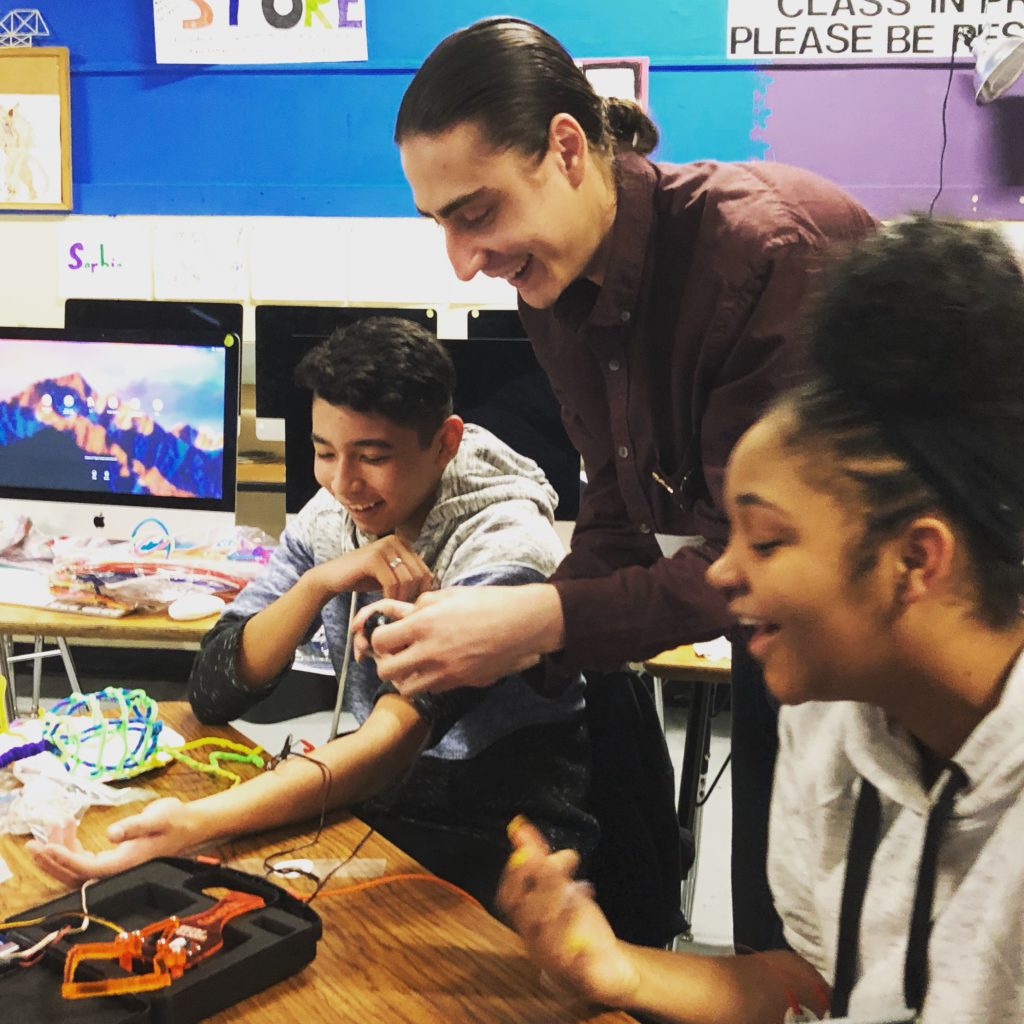
“I rarely see him smile, but after your demonstration he was so engaged and eager to learn!” – K-12 Teacher
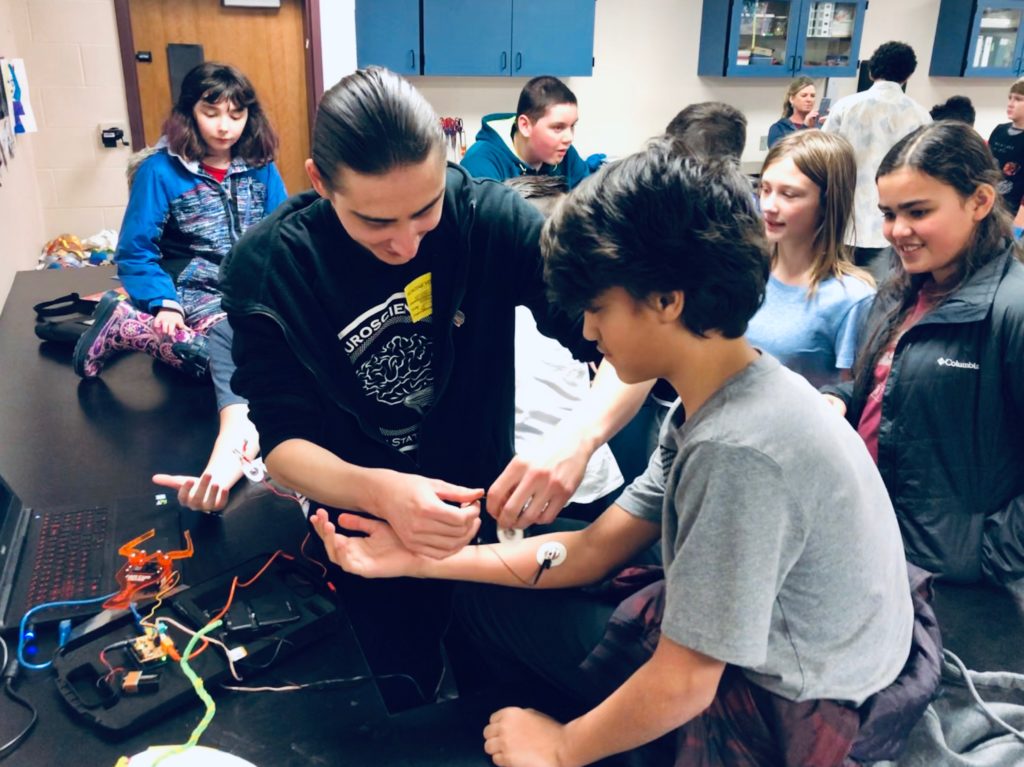
NW Noggin at Skyridge Middle School, Camas Public Schools
LEARN MORE: Best brain scientists!
Thank you Backyard Brains for helping us connect so many young people to neuroscience research, and a better understanding of their developing bodies and brains!
PLEASE NOTE: We go through LOTS of supplies with this demonstration! We could always use more support for purchasing electrodes, muscle electrode cables, and 9V batteries…


